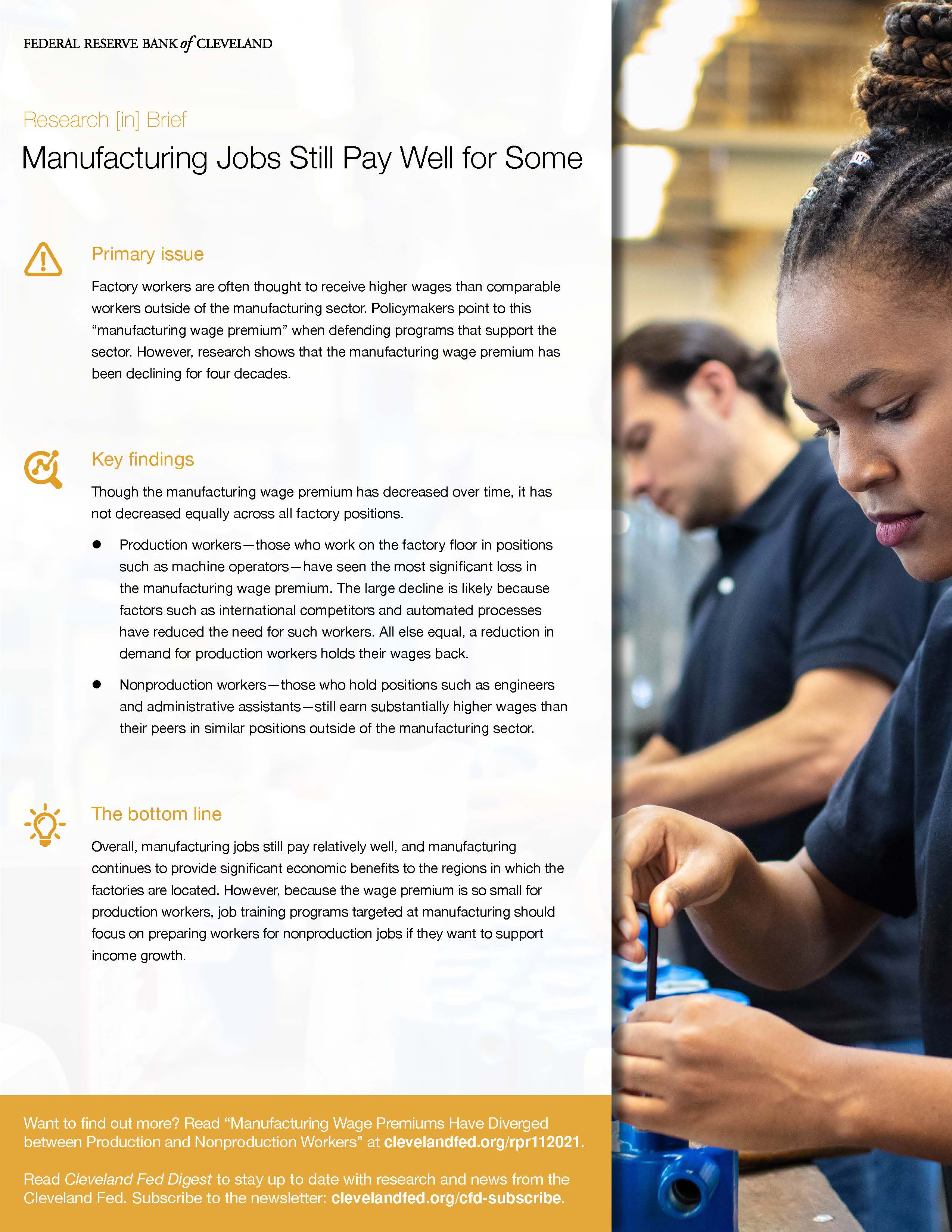- Share
Research [in] Brief: Manufacturing Jobs Still Pay Well for Some
Infographic

Full text
Primary issue
Factory workers are often thought to receive higher wages than comparable workers outside of the manufacturing sector. Policymakers point to this “manufacturing wage premium” when defending programs that support the sector. However, research shows that the manufacturing wage premium has been declining for four decades.
Key findings
Though the manufacturing wage premium has decreased over time, it has not decreased equally across all factory positions.
- Production workers—those who work on the factory floor in positions such as machine operators—have seen the most significant loss in the manufacturing wage premium. The large decline is likely because factors such as international competitors and automated processes have reduced the need for such workers. All else equal, a reduction in demand for production workers holds their wages back.
- Nonproduction workers—those who hold positions such as engineers and administrative assistants—still earn substantially higher wages than their peers in similar positions outside of the manufacturing sector.
The bottom line
Overall, manufacturing jobs still pay relatively well, and manufacturing continues to provide significant economic benefits to the regions in which the factories are located. However, because the wage premium is so small for production workers, job training programs targeted at manufacturing should focus on preparing workers for nonproduction jobs if they want to support income growth.
Want to find out more? Read “Manufacturing Wage Premiums Have Diverged between Production and Nonproduction Workers” at clevelandfed.org/rpr112021.
Related resources
Manufacturing Wage Premiums Have Diverged between Production and Nonproduction Workers
Manufacturing jobs have long been associated with good wages. While some manufacturing workers still enjoy relatively high wages, the premium for workers on the factory floor has shrunk dramatically. Why? And what does it mean for workforce policy?

